Got a novel in you? It’s time to get it out!
Everyone has a book in them – or so the saying goes. But if you’ve a hankering for writing, how do you get started? With an iPhone or an iPad, it’s easier than ever. These devices enable you to write anywhere, removing friction from the process.
That said, you’re not going to top best-seller lists overnight. So here are some ideas for your first steps in penning a classic.
Read and write daily
Exercise your writing brain. Read often and experience different kinds of writing, from poems to screenplays. Start writing for a set period every day. It doesn’t matter what you write about – or even if you write well. 30 minutes on a novel, screenplay or poem is time well spent, but so is half an hour writing as fast as you can about a random subject. Try Day One ($4/£4 per month) for reminders, scheduling and even prompts.
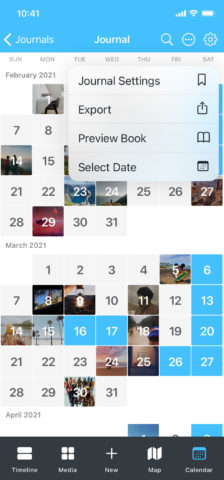
Day One keeps you honest with daily writing.
Avoid distractions
Get yourself into the best frame of mind by surrounding yourself only with the things you need to write. That might be a desk and a blinking cursor in a minimal text editor such as iA Writer ($30/£29) or Ulysses ($6/£6 per month). Or you might need to feed your ears with thumping music as you smash out words. Just screen out anything that won’t help you write.
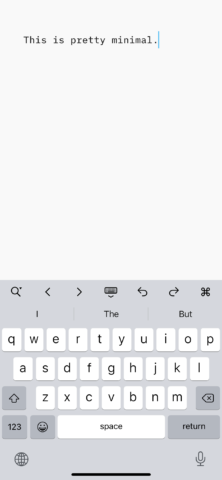
Power without distraction: iA Writer.
Start off small
You might have the seed of an idea for an epic that’d make The Odyssey seem like a throwaway pamphlet. Chances are, you should start with something smaller until you gain in confidence and skill. If you’re keen on storytelling, try to execute one simple idea well. Interested in lyrics or poetry? Grapple with a single verse before expanding. Think: the writing equivalent of sketches rather than finished paintings.
Use writing aids
Finding it hard to decide what to write? For a daily session’s subject, close your eyes and point at a newspaper, book or website, and use the word your finger lands on. Alternatively, try Jason Rekulak’s chunky prompt aid The Writer’s Block: 786 Ideas To Jump-start Your Imagination. Need something more involved? It’s not been updated in a while, but The Brainstormer ($2/£2) provides hundreds of basic set-ups.
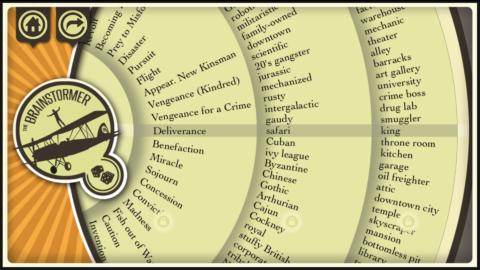
Spinning dials in The Brainstormer.
Write what you know – and what you don’t
Your own experiences provide a useful starting point, especially if you’ve lived an interesting life. But only looking inward can make for writing that is self-absorbed and not at all investigative. So by all means take your first writing steps within the familiar. But look beyond, to stories and ideas you don’t know exist yet, and that will excite you as much as a new reader discovering your work one day.
Note everything down
That interesting turn of phrase? That amusing rhyme? That obscure slice of folklore you dug up on the internet? You never know when such things might come in handy, so stash everything for later. For short-form notes, Drafts ($3/£3 per month) is an excellent, flexible aid. For long-form writing projects where you need research alongside, nothing beats Scrivener ($20/£20).
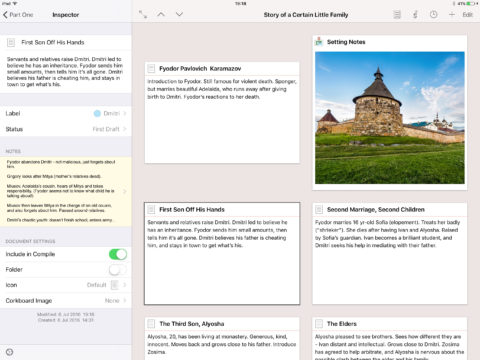
Stashing research in Scrivener.
Map things out
Everyone writes in a different way. Some get a title down and then write a full draft before revising it. Others work with words like they’re sculpting. Still more start in the middle. Whatever works for you, keep track of ideas, summaries, perspectives and what should be happening at any given point. MindNode ($3/£3 per month) is good for free-form layouts. Like grids? Numbers (free) isn’t just about calculations.
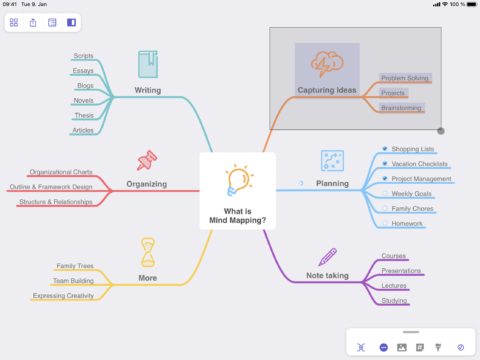
Get ideas down using MindNode’s mind maps.
Make it real
Much writing requires you as an individual to put yourself in the minds of other people. You must reach an audience emotionally with poems and lyrics. With stories and screenplays, it’s vital to have characters that feel alive and unique. You need to be able to live inside of your characters, to track their moves, and to speak with different voices. If you catch everyone sounding or acting the same, shake things up.
Buy some hardware
Touchscreen devices are great for consuming media and interacting with digital art and music apps. They’re not so hot for working with words. So buy an external keyboard. You can even get portable ones for iPhone. Along with a stand, that gives you a portable set-up when out and about. And when you can’t type, dictation can ensure ideas don’t get away. Siri’s on every iOS device, but try Otter Voice Meeting Notes (free + IAP) as well.

Logitech’s Keys-To-Go comes with a stand. You can get even smaller foldable keyboards too.
Get regular feedback
Writing can be lonely, and it can be hard to ask other people for opinions. You might doubt your abilities and not want to share your work with others. If you can, do. If not, ask yourself questions about your writing. It might sound odd to have a conversation with yourself, but even by asking the most basic questions about what you’re trying to achieve and how things are working out, you can often unlock paths forward to greater storytelling.

